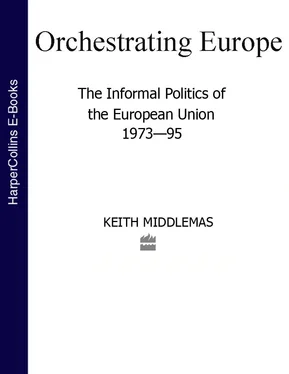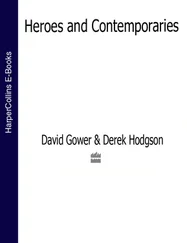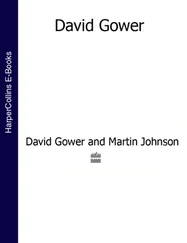SOCIAL CHARTER
The Charter’s roots can be traced back to the previous period of trade union influence nearly two decades earlier; more directly to the report from the Commission working group in 1979. It was also influenced by the high levels of tripartite consultation in the EFTA countries which were already requesting membership, such as Austria, displayed in the 1989 Kreisky Report. If, as the Commission forecast, these states were soon to enter the EC, then the Community’s labour market arrangements should be compatible with the conditions they already enjoyed. So argued the Netherlands, who were the leaders in this particular field. Delors and leading members of the ETUC such as Ernst Breit (DGB), Bruno Trentin (CGIL), and Nicolas Redondo of Spain’s UGT drew up the Social Charter, which was then adopted as part of the IGC agenda by eleven member states to one in December 1989. Its intention was to renew the earlier ‘social dialogue’ and compensate for the deleterious impact of the internal market and industrial restructuring, of which rising unemployment – forecast to reach 13% across the EC by 1992–3 – was the first consequence.
The Charter itself set out twelve categories of workers’ rights, based usually on the West German model of mitbestimmung, which were presumed to facilitate the emergence of a single European labour market, more flexible and endowed with higher skills. 27The Charter embodied the Vredeling directive under another, non-compulsory form, and was likely to arouse opposition from UNICE and the European Committee members of AmCham because of employers’ predictable fears about higher costs, restrictions on the rights of management to hire and fire, and the imposition of standard contracts of employment. Indeed Delors told one British chief executive that the Charter was meant to be ‘the instrument for levelling the (labour) field’.
In spite of a proposed directive linking progress on rights to the cross-border mergers on which large companies were now keen, the only coordinated opposition came from Britain and Denmark. With their higher labour costs and legally protected markets, the governments, and in many cases the trade and employers federations of France, Germany and the Benelux countries, saw the Charter as a way of balancing the ‘Anglo-Saxon advantage’ which was initially predicted to derive from the internal market. Italy and Spain also wished to avoid disruption from trades unions at a sensitive period while their governments pruned public finances. The Charter thus stimulated systemic conflict between very different approaches to industrial relations, labour law, social security, welfare and pensions.
Yet there existed a strong case for arguing that the Charter would actually facilitate the internal market transition of which, according to the Commission, it was now a component (just as Structural Funds – doubled in size to 50 million ecus in 1989–92 – would ease the problems of declining industry and long-term unemployment (including the British coal industry)). The case for harmonizing laws on health and safety had been agreed already and if there were to be derogations they would be for the poorer countries, not Britain or Denmark. Thus the issue rested on the legal weight to be given to rights such as adequate information for employees about company strategies.
On the European Companies Statute (the heir to Vredeling) the Commission set out three basic models: that of Germany, the Franco-Belgian factory council model, and the British tradition of voluntary arrangements or bargains. From the list, all large and medium-sized firms would have to select one. It was perhaps unfortunate that the Commissioner in charge was neither much liked nor diplomatically skilled, because the Commission college let Vasso Papandreou, with her forty-seven directives, take the brunt of UNICE’s attack, 28while keeping in reserve a still-tripartite but more voluntarist alternative.
Much depended on the powers that trade union confederations still maintained at national level, in what was inevitably a subordinate part of the Maastricht arena, even for the more committed member states. Mitterrand’s phase ‘no Europe without a social Europe’ carried little weight even with social-democratic governments in 1991. During the IGC, the Dutch Presidency did its best for the Social Charter. But Britain, its government relatively united on Thatcherite principles, refused, on this matter, to accept QMV at all.
There being no choice, if the Charter were to be salvaged from a British veto, the other eleven governments proceeded with it as if it had been part of the Treaty, in a masterpiece of informal politics which the Netherlands Presidency then turned into a Protocol. John Major, taken aback by the long-term prospects if the Commission were to choose (under Article 100A of the Single European Act) to launch fresh legislation under a QMV heading, presented this optin by the majority of eleven to the House of Commons as if it had been a successful opt-out by the one.
REFORM OF INSTITUTIONS
Bargaining about the Commission’s competences surged up on these issues, often for financial reasons, because many of the trade-offs included compensation, through the proposed cohesion funds, for member states which expected to do badly out of EMU as well as the internal market. But behind disputes about the EC’s swelling budget rested issues of sovereignty and institutional reform. Insofar as the cost of regional equilibrium would rise, for example, the ‘northern’ member states who paid the most required supervision of the allocation and spending of both structural and cohesion funds. 29At the same time, the collapse of Communist regimes in eastern Europe required a response. If there were not to be a rush by Western countries to take easy advantage of newly democratic, politically inexperienced states with weak economies overloaded with Comecon debts, the Community had to act together. So it did; but it was the Commission which coordinated the West’s rehabilitation and loan programme, first for Poland and Hungary, then for all of eastern Europe. Fears that the Commission would thus slip into defining a sort of Community foreign policy led Mitterrand at Strasbourg to sponsor the grand concept of a European economic entente, a case which – like the Kohl-Mitterrand declaration on EMU and EPU – revealed the Council’s increasing habit of reaching major decisions in principle, usually on a Franco-German basis, preempting in practice both the Commission and Parliament.
Even before the IGCs began, change and reform of institutions touched other spheres, such as the European Court of Justice. 30Any extension of QMV proposed at Maastricht would also greatly complicate member states’ tactics, obliging them to calculate more carefully than they already had to, under the Single European Act, when constructing alliances or trading advantages if they wished to mobilize a blocking minority. But some power also adhered to the Parliament, as its President, Enrique Baron Crespo, with Kohl’s support, demanded that the political IGC should confer on it the right to initiate legislation, and amend more of, or reject, what was put before it. Italian, Dutch, and Luxembourg ministers, as well as those from Germany, supported this challenge to the prerogatives of the Commission and the Council.
The Parliament had already conducted its own attempt to set the IGC’s agenda, when its first ‘assizes’, held in Rome in November 1989, debated the proposals which Baron Crespo was later to advance in his semi-official meetings with ministers before and during Maastricht. These included not only greater rights to initiate, amend or reject legislation, but definitions of citizenship – basic rights on which might eventually be constructed the idea of a European public. In addition, it asked for enlarged competence for the Commission in social and environmental cases, and that European political cooperation (EPC) should be brought within the Treaties.
Читать дальше









![Brian Thompson - A Monkey Among Crocodiles - The Life, Loves and Lawsuits of Mrs Georgina Weldon – a disastrous Victorian [Text only]](/books/704922/brian-thompson-a-monkey-among-crocodiles-the-life-thumb.webp)


